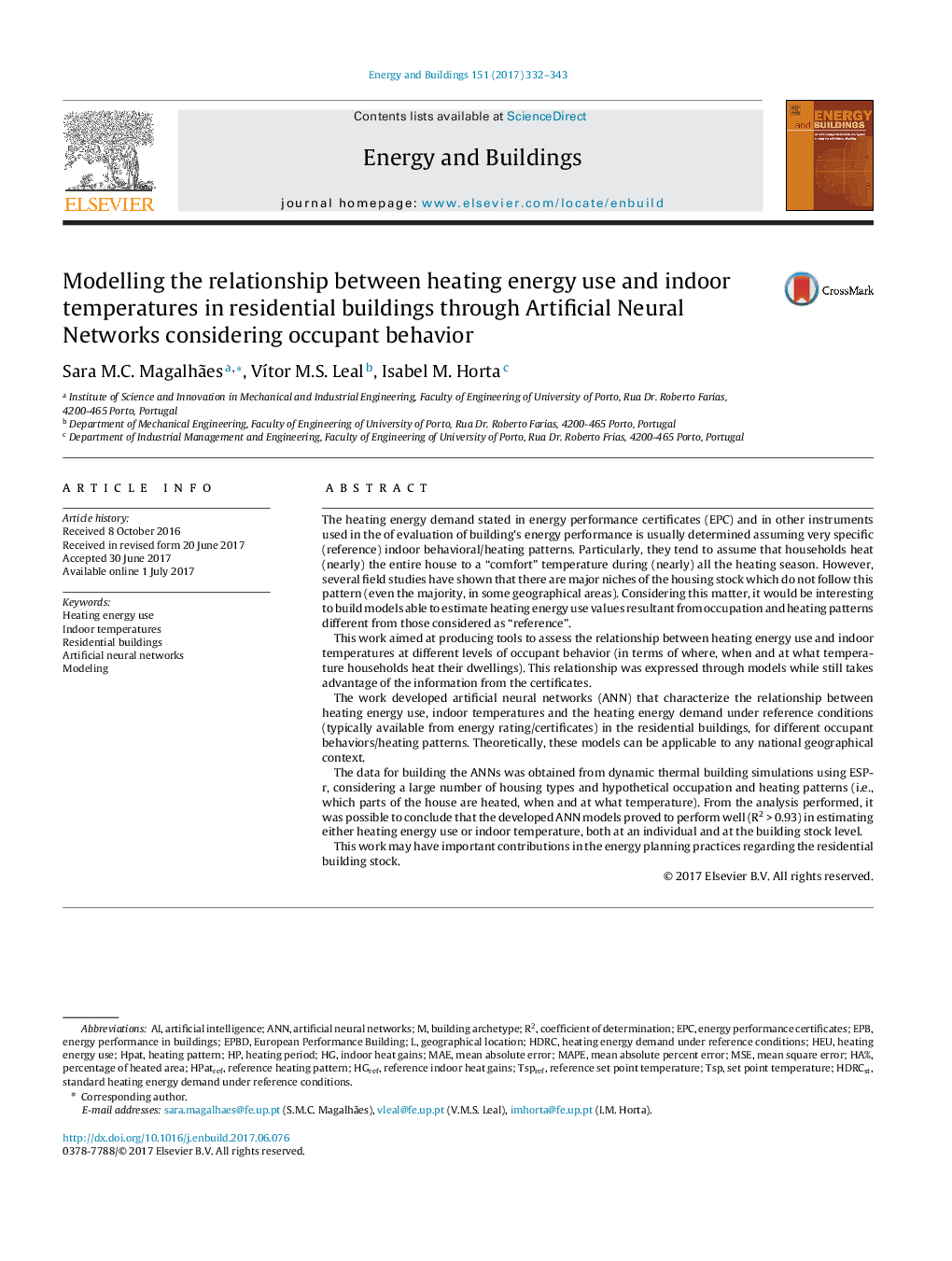| کد مقاله | کد نشریه | سال انتشار | مقاله انگلیسی | نسخه تمام متن |
|---|---|---|---|---|
| 6481095 | 1428939 | 2017 | 12 صفحه PDF | دانلود رایگان |
- The work developed artificial neural networks (ANN) models to predict heating energy use.
- Theoretically, the models can be applicable to any geographical context.
- The data for building the ANNs was obtained from dynamic thermal building simulations using ESP-r.
- ANN developed proved to perform well (R2Â >Â 0.93) in estimating heating energy use or indoor temperature.
- This work may have important contributions in the energy planning practices regarding the residential building stock.
The heating energy demand stated in energy performance certificates (EPC) and in other instruments used in the of evaluation of building's energy performance is usually determined assuming very specific (reference) indoor behavioral/heating patterns. Particularly, they tend to assume that households heat (nearly) the entire house to a “comfort” temperature during (nearly) all the heating season. However, several field studies have shown that there are major niches of the housing stock which do not follow this pattern (even the majority, in some geographical areas). Considering this matter, it would be interesting to build models able to estimate heating energy use values resultant from occupation and heating patterns different from those considered as “reference”.This work aimed at producing tools to assess the relationship between heating energy use and indoor temperatures at different levels of occupant behavior (in terms of where, when and at what temperature households heat their dwellings). This relationship was expressed through models while still takes advantage of the information from the certificates.The work developed artificial neural networks (ANN) that characterize the relationship between heating energy use, indoor temperatures and the heating energy demand under reference conditions (typically available from energy rating/certificates) in the residential buildings, for different occupant behaviors/heating patterns. Theoretically, these models can be applicable to any national geographical context.The data for building the ANNs was obtained from dynamic thermal building simulations using ESP-r, considering a large number of housing types and hypothetical occupation and heating patterns (i.e., which parts of the house are heated, when and at what temperature). From the analysis performed, it was possible to conclude that the developed ANN models proved to perform well (R2Â >Â 0.93) in estimating either heating energy use or indoor temperature, both at an individual and at the building stock level.This work may have important contributions in the energy planning practices regarding the residential building stock.
Journal: Energy and Buildings - Volume 151, 15 September 2017, Pages 332-343
